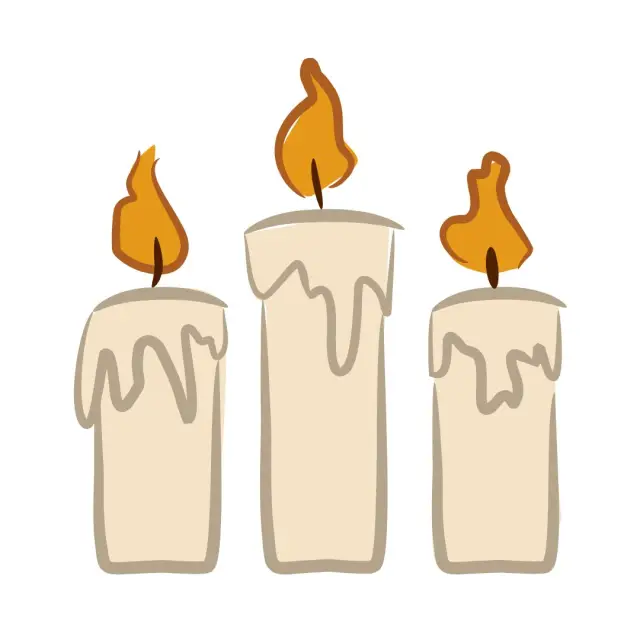Candlemas , celebrated on February 2, is one of the most deeply rooted traditions in Mexico , combining religious, cultural and gastronomic elements that reflect the richness of its national identity. This day marks the end of the Christmas festivities, uniting pre-Hispanic symbolism with Catholic traditions that arrived with the Spanish colonization.
Origin of Candlemas Day
Candlemas has its roots in two traditions that became intertwined with the arrival of the Spanish in Mexico:
Catholic tradition
The feast of Candlemas is linked to the presentation of the baby Jesus in the temple, 40 days after his birth, as dictated by Mosaic law. In addition, it celebrates the purification of the Virgin Mary after childbirth. In the European context, this day also involved the blessing of candles (hence the name “Candelaria”), symbolizing the light of Christ.
Pre-Hispanic tradition
In Mexico, this festivity was integrated with indigenous customs. The Mexicas had celebrations in honor of Tláloc, god of rain, and Chalchiuhtlicue, goddess of water. During these ceremonies, they prayed for good harvests and abundance. With evangelization, these practices were syncretized with Catholic rituals, giving rise to a celebration that honors both the divine and nature.
Candlemas Day Customs
Candlemas is a special time for Mexican families, full of rituals and symbolism that vary by region. Below we highlight the most popular customs:
Dressing the Baby Jesus
Those who found the doll of the Baby Jesus in the Rosca de Reyes on January 6 have the responsibility of dressing it and taking it to be blessed on February 2. The costumes for the Baby Jesus are varied, from religious attire such as an angel or saint, to representations of popular trades or cultural traditions.
The blessing of the Child God
Families take the Child Jesus to church to be blessed by the priest. This act symbolizes protection and gratitude, as well as marking the beginning of a new spiritual cycle in the home.
Tamales
One of the most anticipated culinary traditions is the preparation and enjoyment of tamales. This dish, made from corn dough stuffed with meat, vegetables or sweets, wrapped in corn or banana leaves, is the center of the celebration. Those who found the doll in the Rosca de Reyes are responsible for inviting the tamales, accompanied by atole, a hot corn drink.
Other cultural expressions
In many communities, especially in rural areas, Candlemas also includes traditional dances, processions and fairs. These activities reinforce the sense of identity and community, showcasing Mexico's cultural richness.
Regions where Candelaria has a special meaning
Although Candlemas is celebrated throughout the country, there are places where traditions take on a particular character due to their historical and cultural context:
Tlacotalpan, Veracruz
Candlemas Day in Tlacotalpan is a UNESCO Intangible Cultural Heritage of Humanity. In this city, the festivities include a river procession in honor of the Virgin of Candelaria, the town's patron saint. The streets are filled with music, dancing, and traditional food, such as zacahuil, a giant tamale.
Chiapas
In towns like San Juan Chamula, the syncretism between Catholic and Mayan traditions is evident. During Candlemas, ceremonies include corn offerings, candles and prayers in indigenous languages.
Mexico City
At the Basilica of Guadalupe and other important churches, thousands of faithful gather to bring their Baby Jesus to be blessed. The capital is also distinguished by its culinary diversity and markets that offer all kinds of clothing for the Baby Jesus.
Symbolism of corn and tamales
Corn plays a central role in the celebration of Candelaria, both for its historical importance as a staple food in Mexico and for its symbolic meaning. In pre-Hispanic cultures, corn was considered a divine gift, essential for life. Tamales, made with corn, represent unity and abundance, while the act of sharing them strengthens family and community ties.
Religious and spiritual importance
For believers, Candlemas is an opportunity to renew their faith and ask for blessings for the coming year. Candlelight symbolizes hope and protection, while the Child Jesus represents the divine presence in the home. In addition, the tradition of dressing the Child Jesus reflects the commitment to care for and honor him.
Candlemas in modern times
Today, Candlemas remains a vibrant and lively celebration. However, it has also evolved to fit modern times. Social media and online marketplaces make it easy to purchase outfits for the Baby Jesus, while restaurants and caterers offer tamale options for those who don’t have time to prepare them at home. Despite these changes, the spirit of the celebration remains the same: an occasion to gather, share, and honor traditions.
Candlemas in Mexico is much more than a religious celebration; it is a reflection of the country's cultural identity, where the past and the present, the sacred and the everyday, coexist. Through its rituals, food and artistic expressions, this holiday reminds us of the importance of community, gratitude and faith. Every February 2, Mexicans renew their commitment to their roots and traditions, preserving a legacy that continues to illuminate the heart of their culture.
